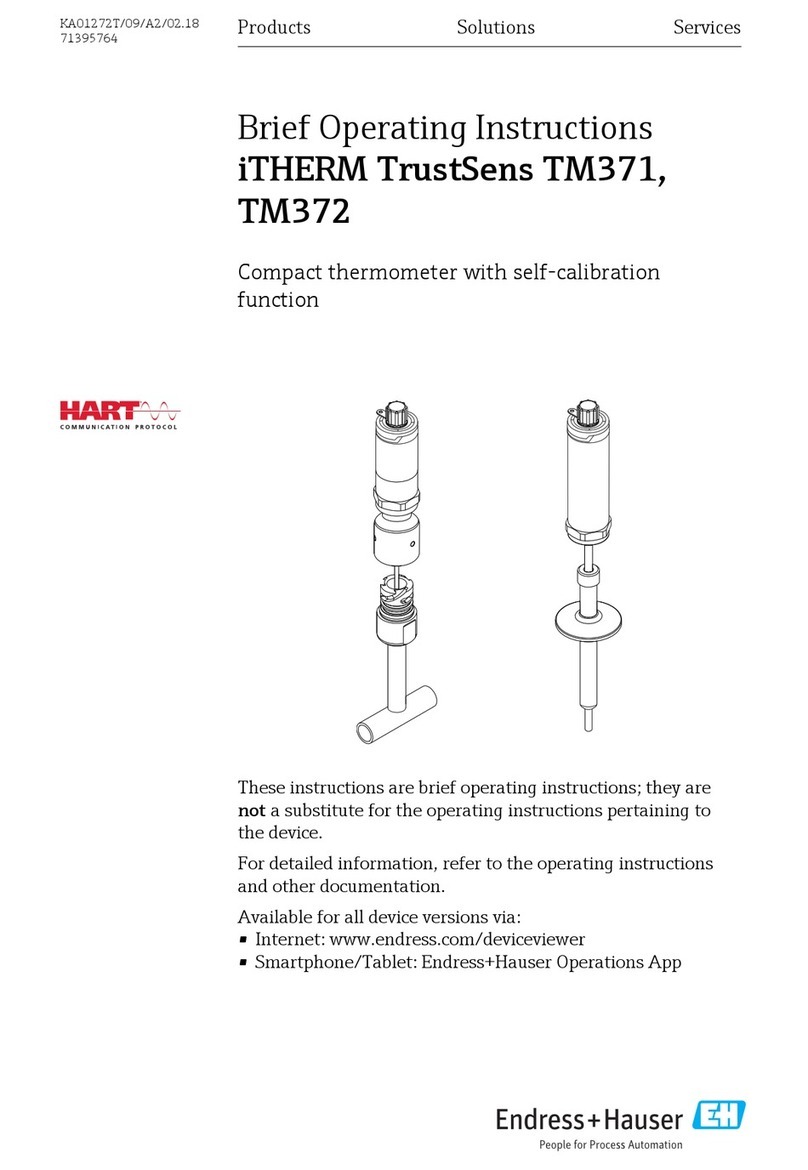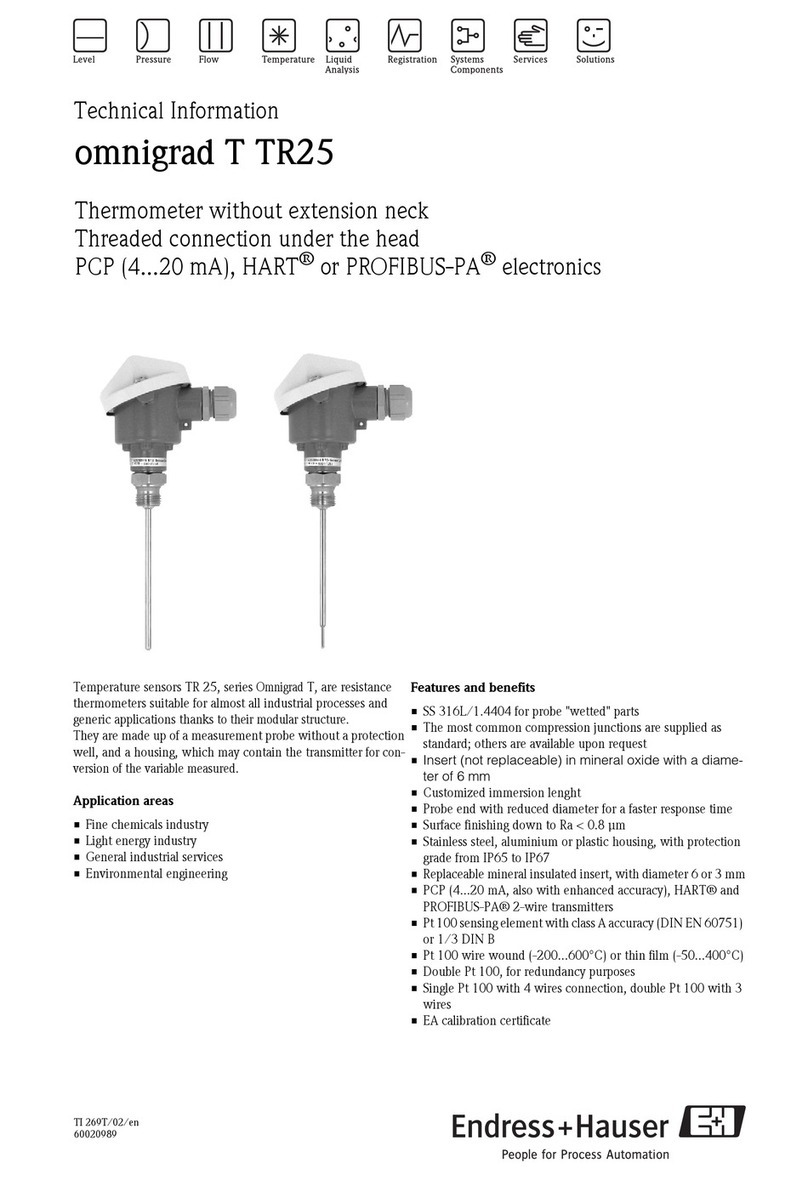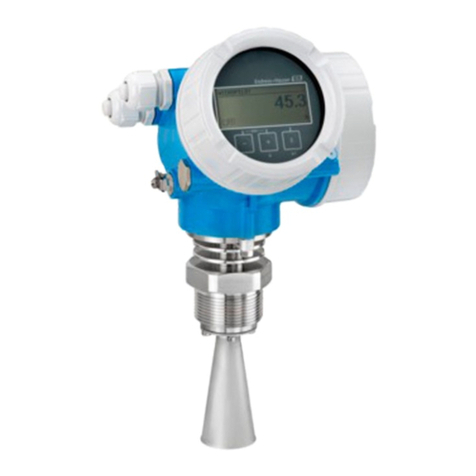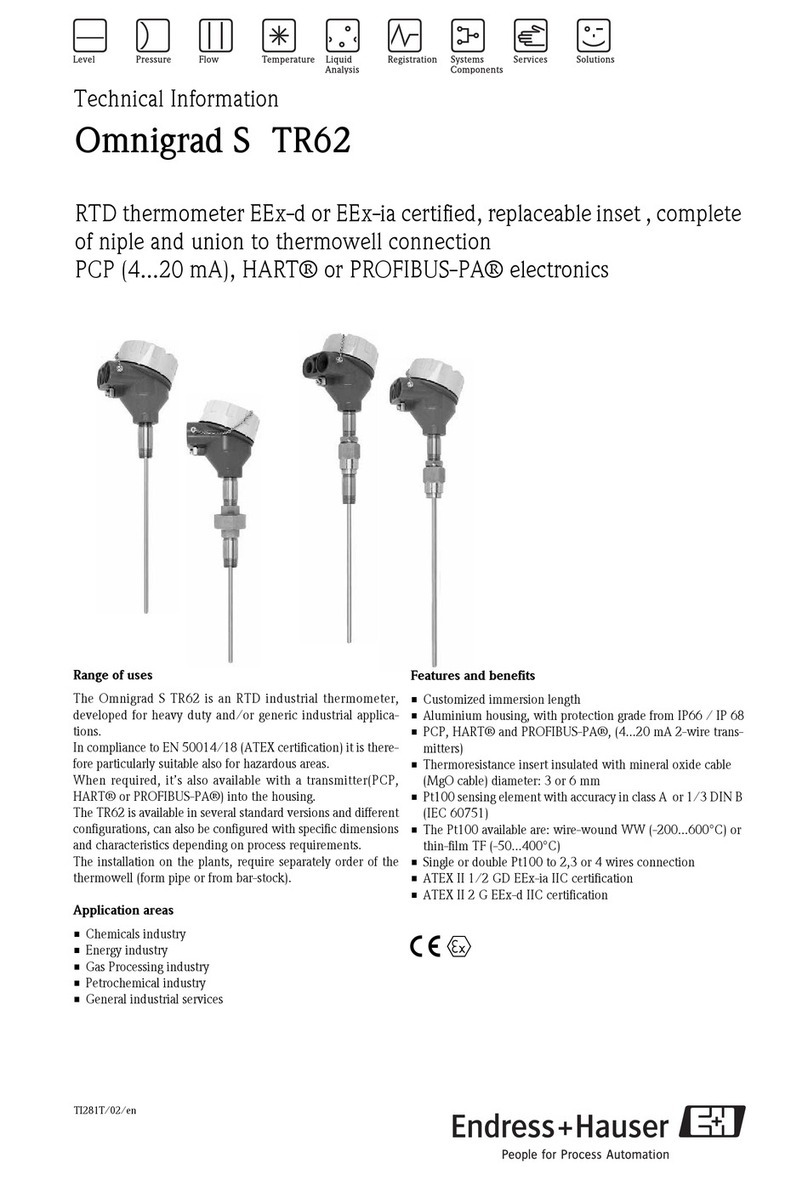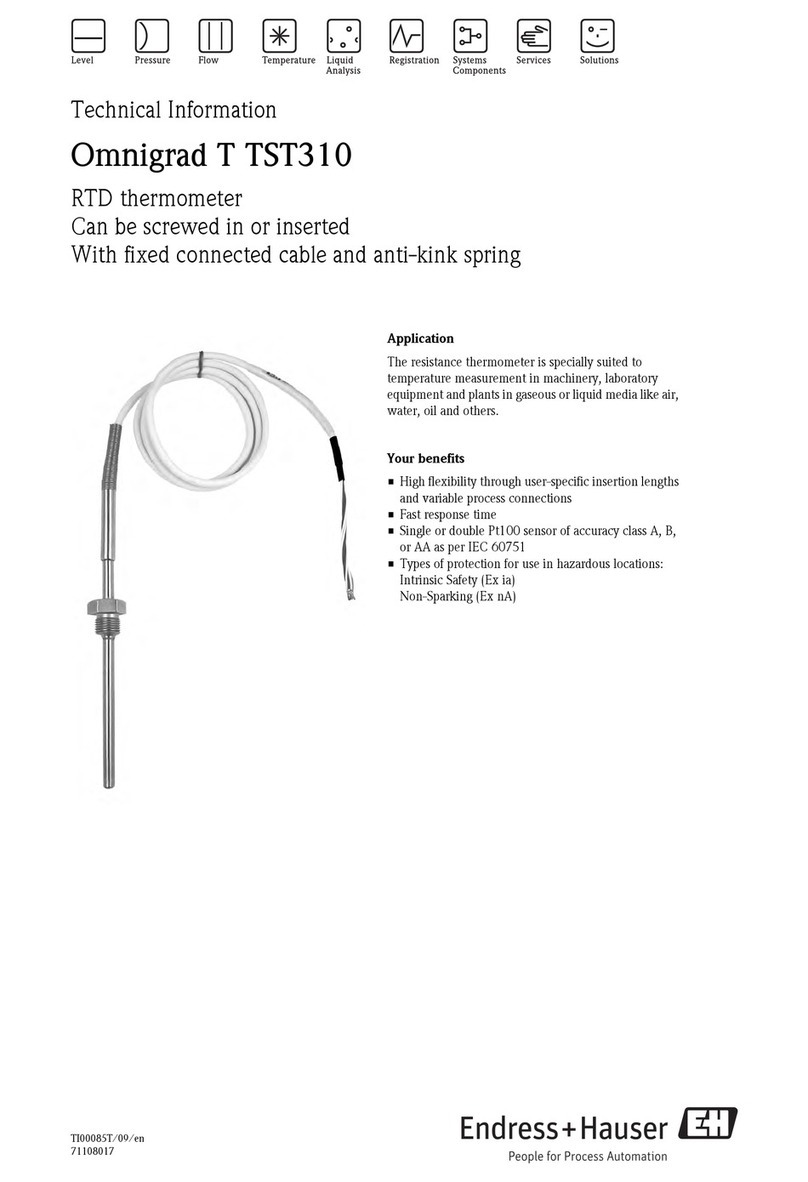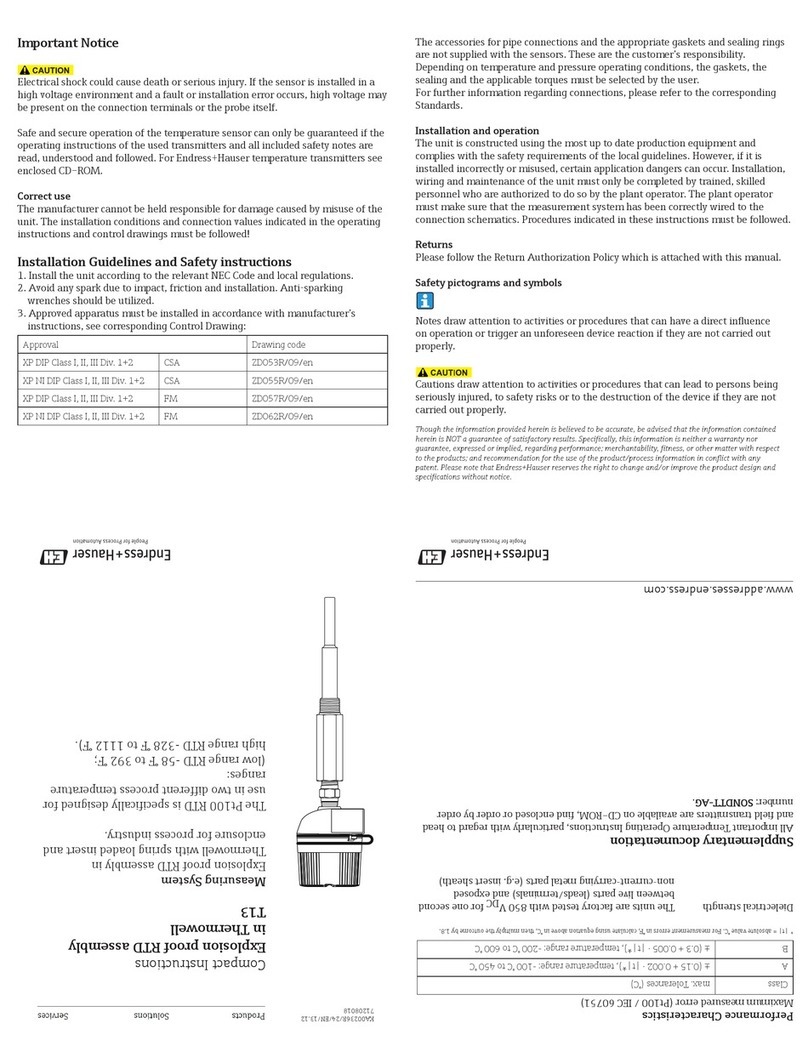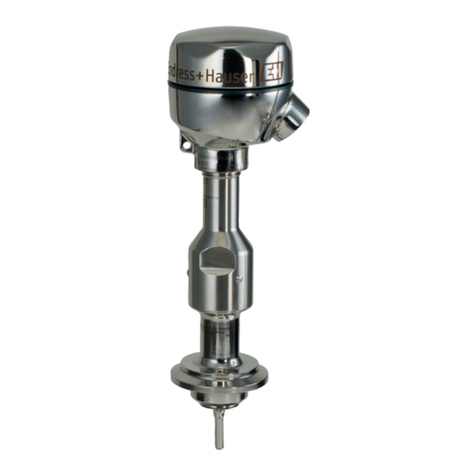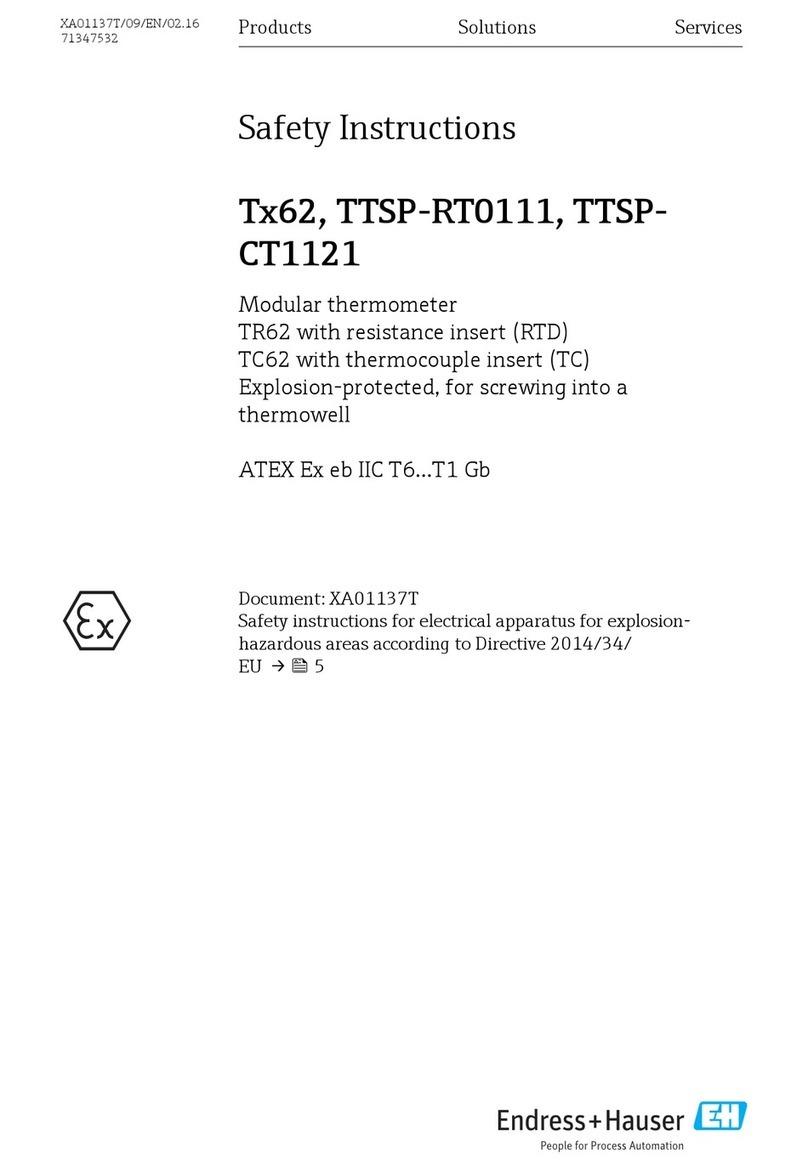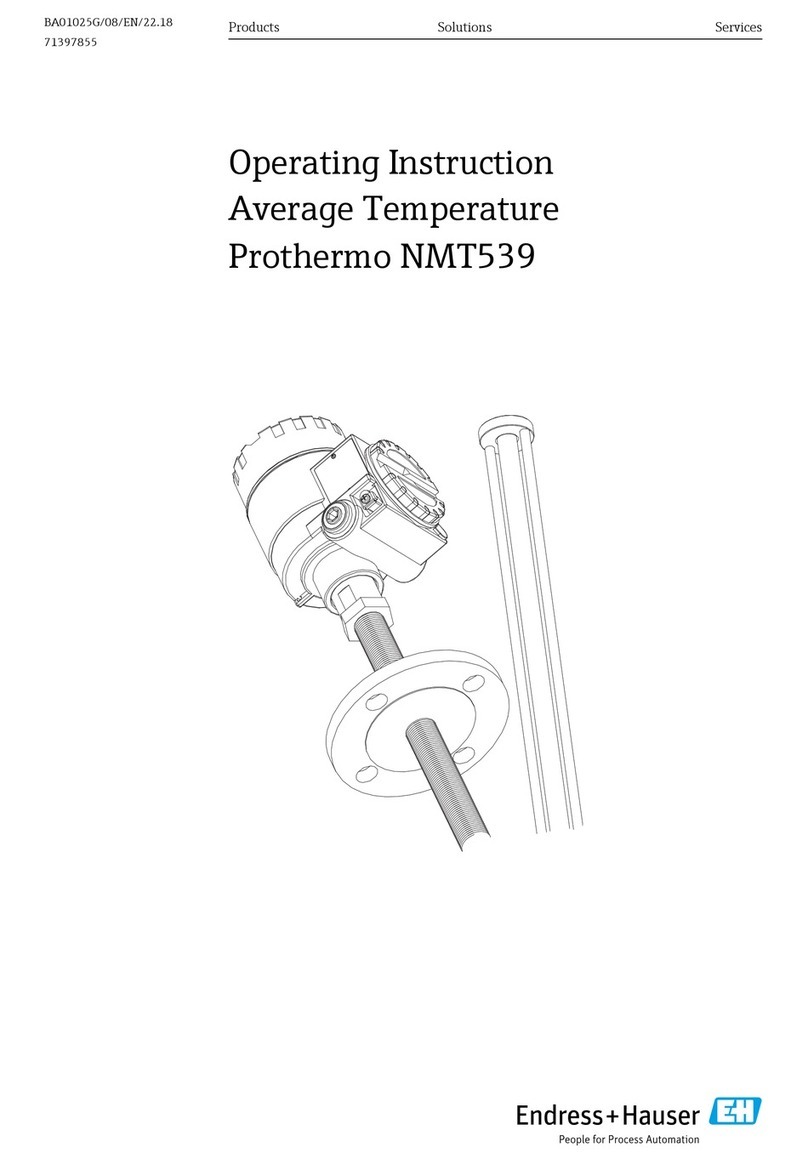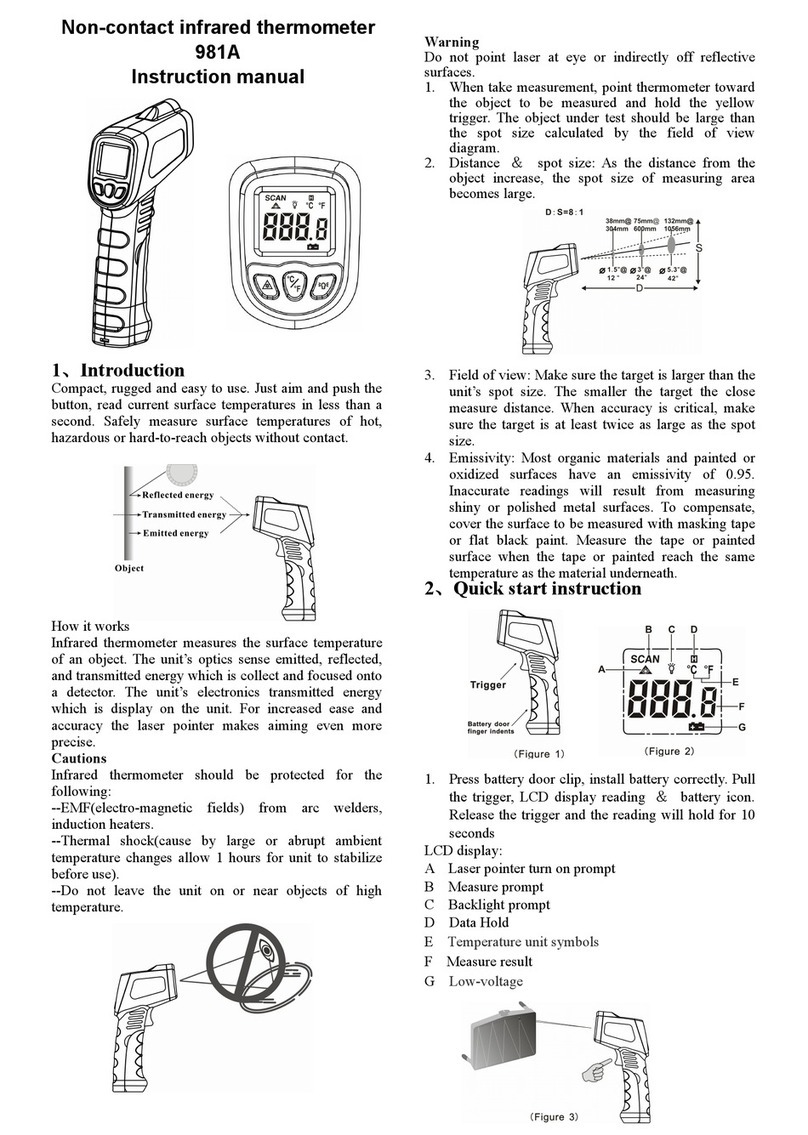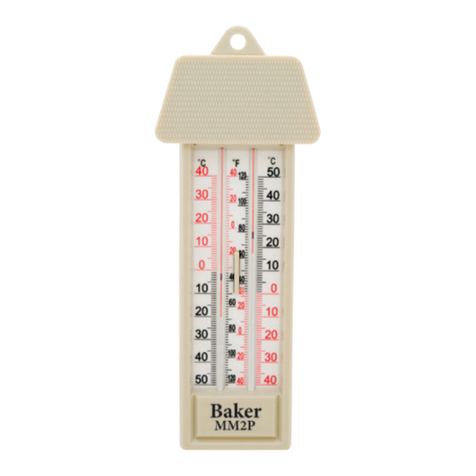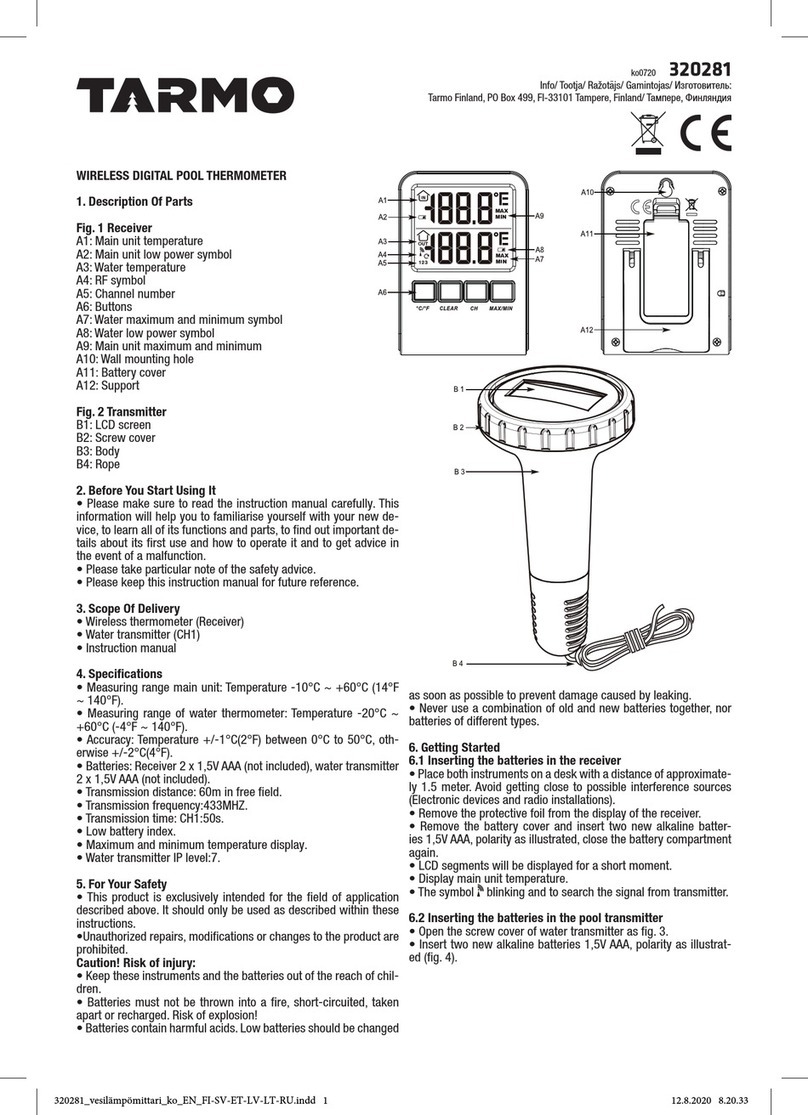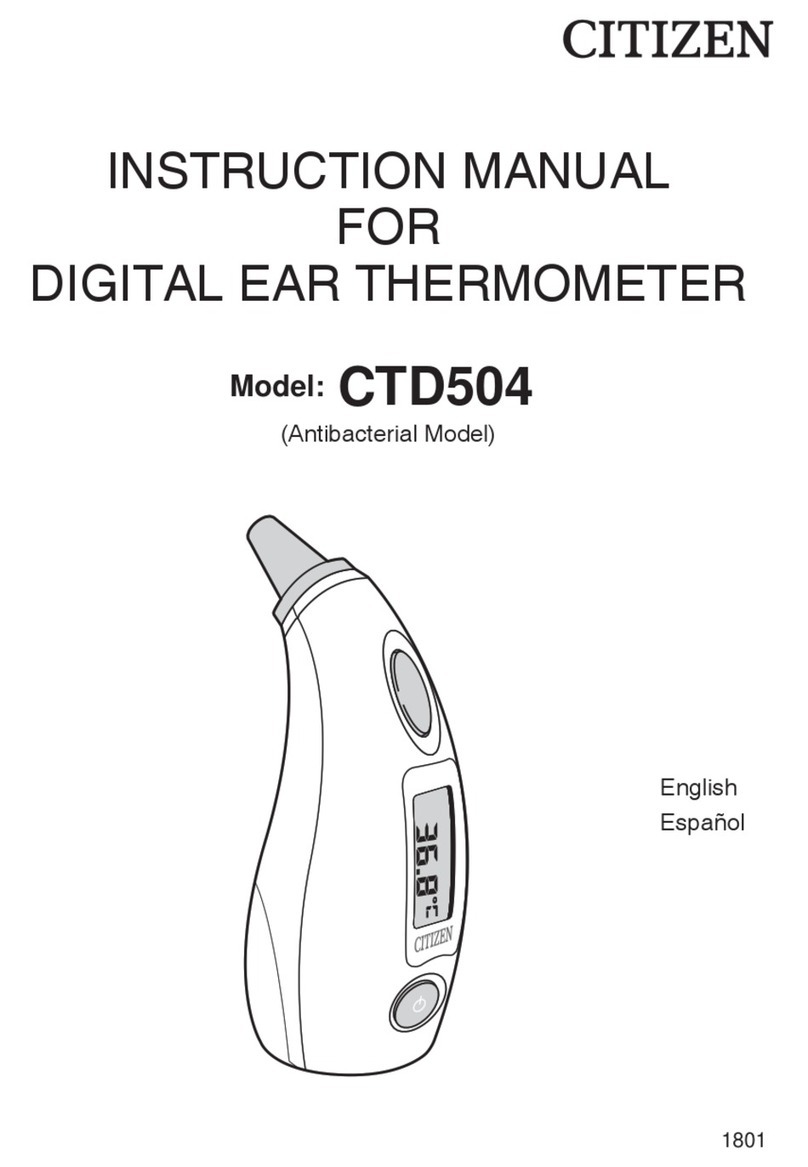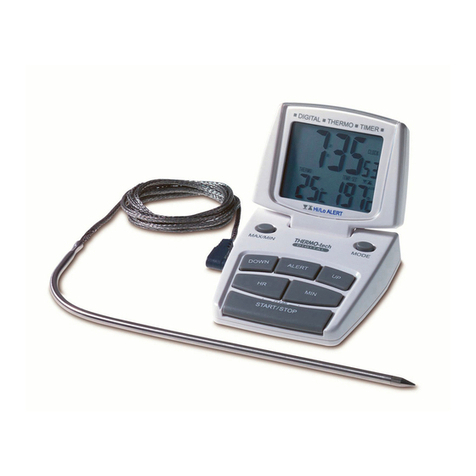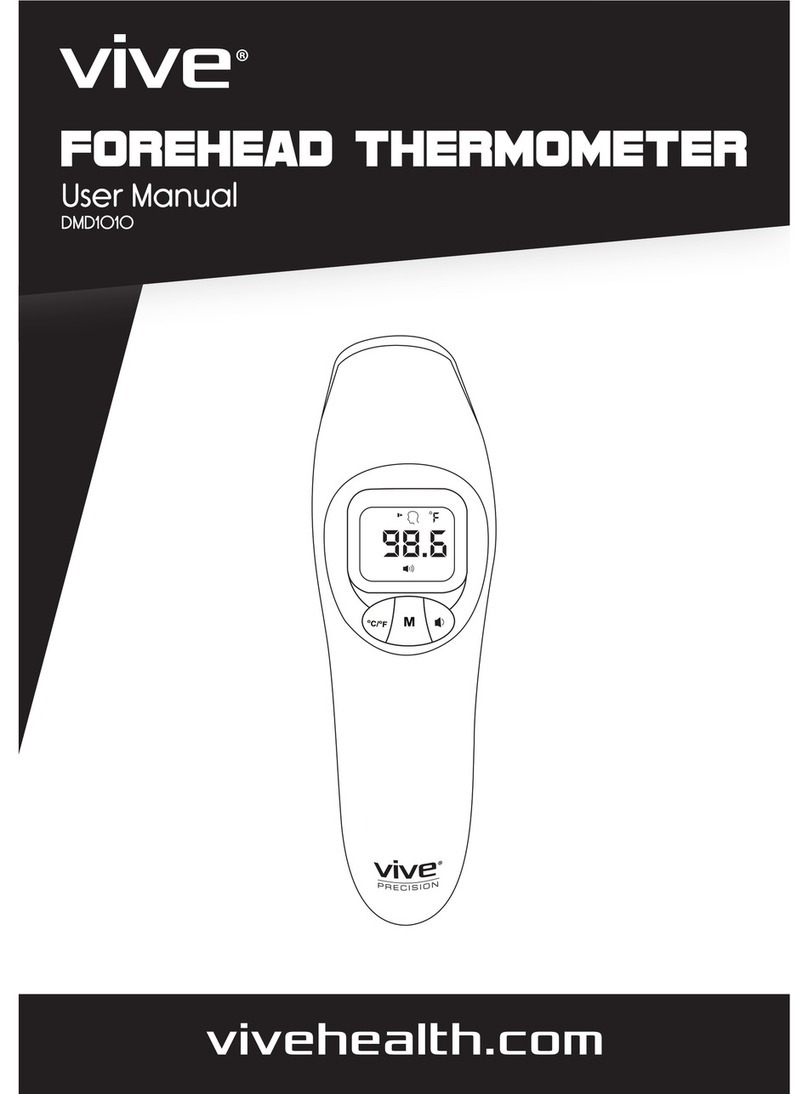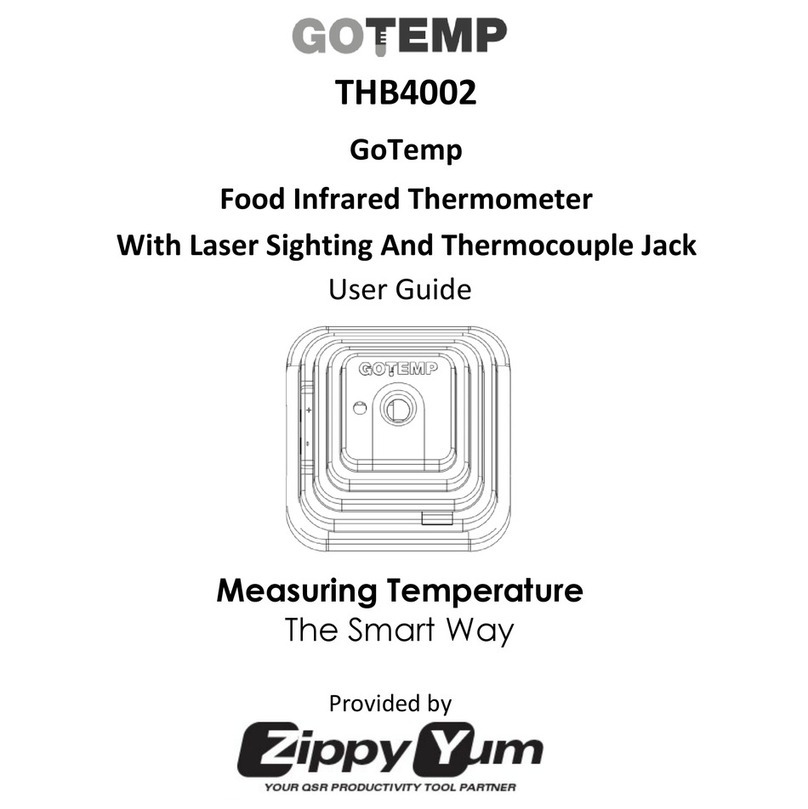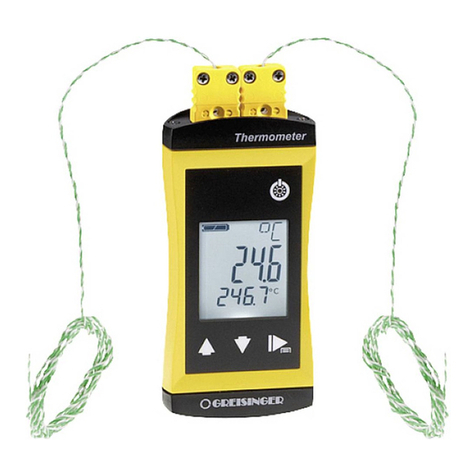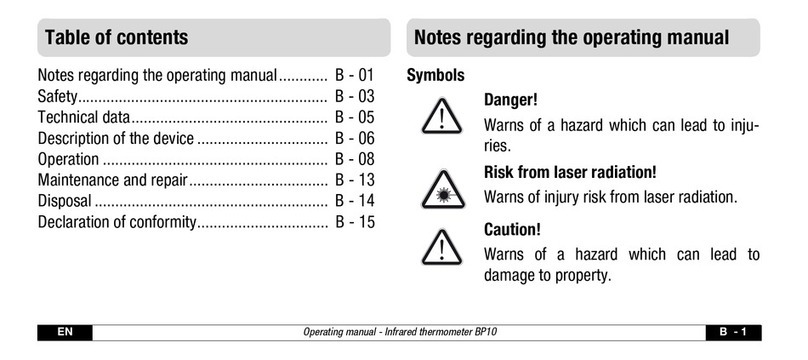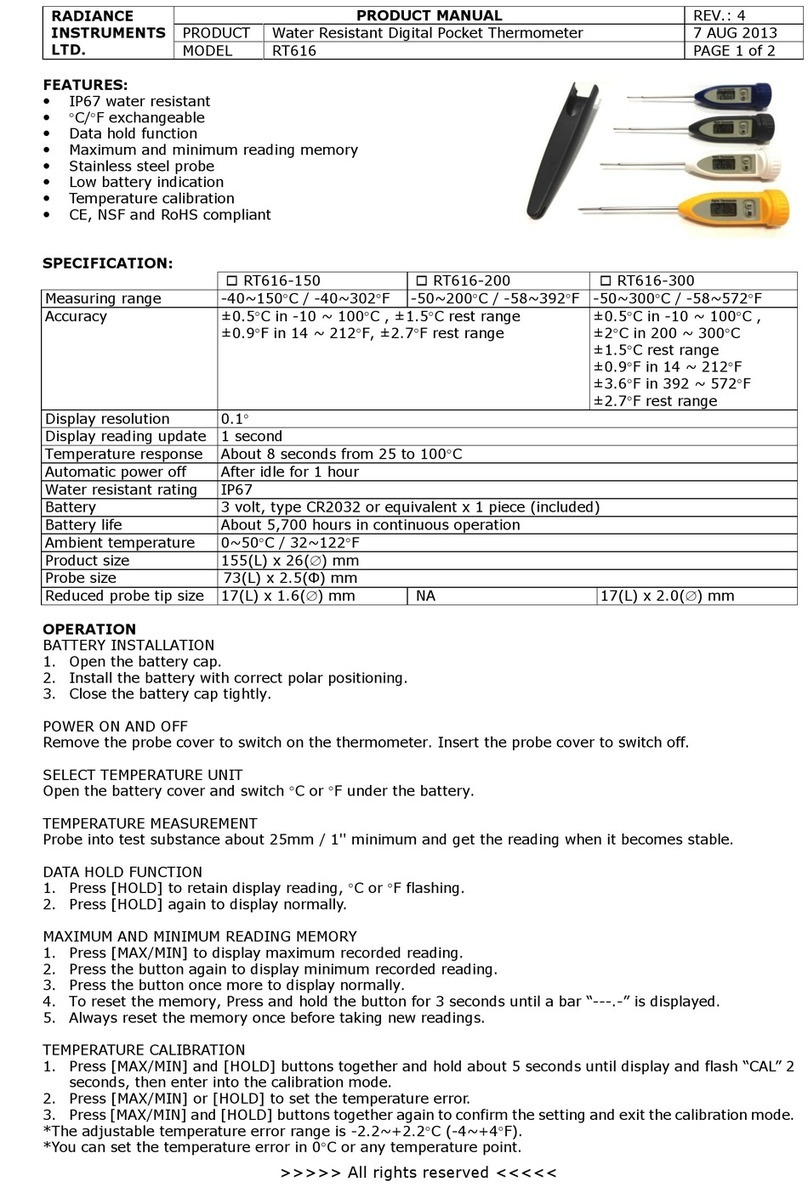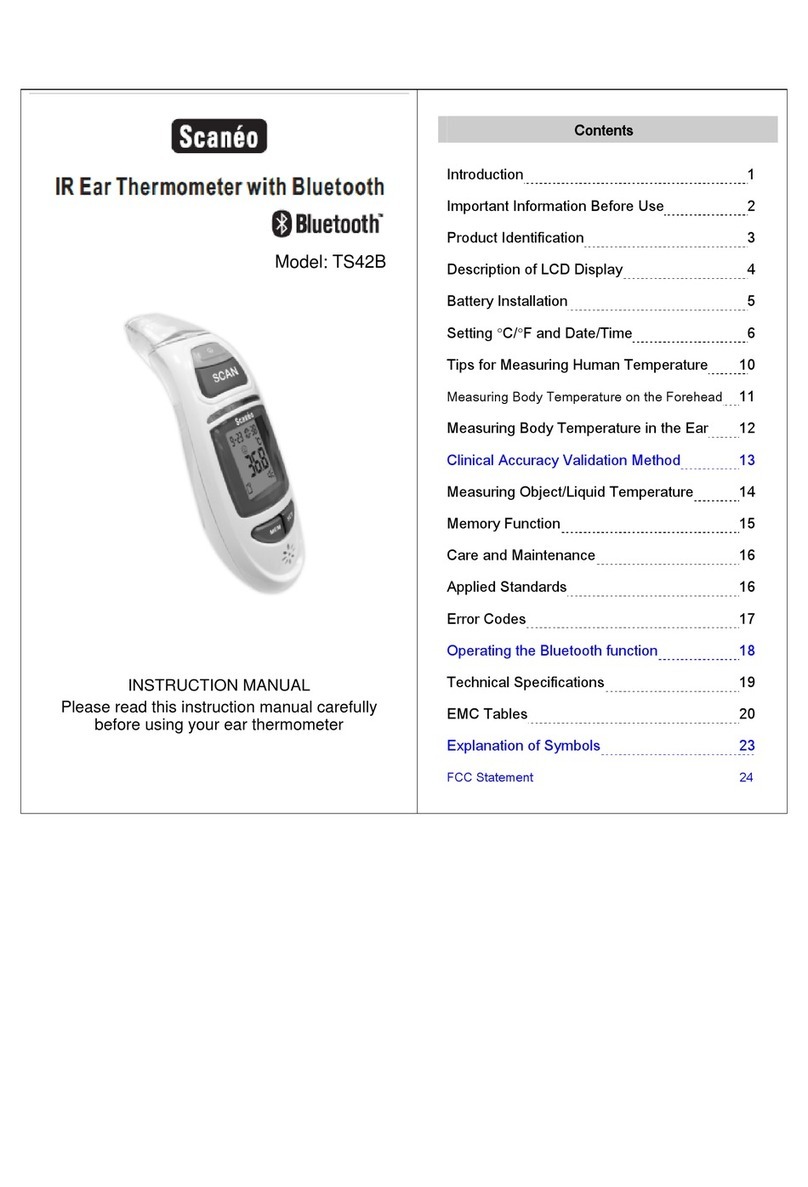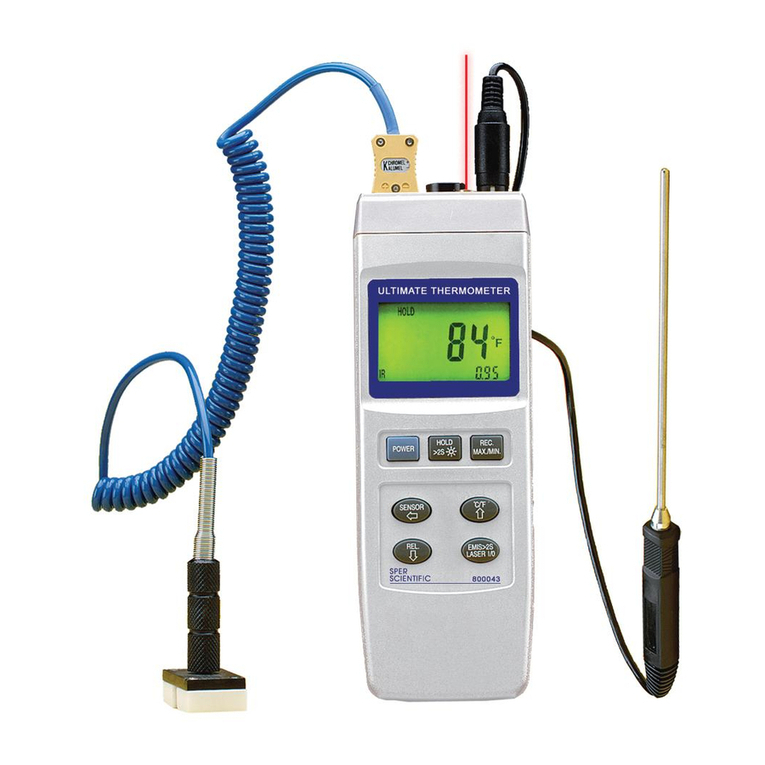Omnigrad M TR13, TC13
10
Material name Short form Recommended max.
temperature for
continuous use in air
Properties
Hastelloy
C276/2.4819
NiMo16Cr15W 1 100 °C (2 012 °F) • A nickel-based alloy with good
resistance to oxidizing and reducing
atmospheres, even at high
temperatures
• Particularly resistant to chlorine gas
and chloride as well as to many
oxidizing mineral and organic acids
Jacket
PTFE (Teflon) Polytetrafluorethylen 200 °C (392 °F) • Resistant to almost all chemicals
• High temperature stability
PVDF Polyvinylidene fluoride 80 °C (176 °F) • High stability
• A high creepage stability under
continuous demand
• Good cold properties
Tantalum - 250 °C (482 °F) • With the exception of hydrofluoric
acid, fluorine and fluorides, tantalum
exhibits excellent resistance to most
mineral acids and saline solutions
• Prone to oxidation and embrittlement
at higher temperatures in air
1) Can be used to a limited extent up to 800 °C (1472 °F) for low compressive loads and in non-corrosive
media. Please contact your Endress+Hauser sales team for further information.
Components
Family of temperature
transmitters
Thermometers fitted with iTEMP® transmitters are an installation-ready complete solution to
improve temperature measurement by significantly increasing accuracy and reliability, when
compared to direct wired sensors, as well as reducing both wiring and maintenance costs.
PC programmable head transmitters
They offer a high degree of flexibility, thereby supporting universal application with low inventory
storage. The iTEMP® transmitters can be configured quickly and easily at a PC. Endress+Hauser
offers free configuration software which can be downloaded from the Endress+Hauser Website.
More information can be found in the Technical Information.
HART® programmable head transmitters
The transmitter is a 2-wire device with one or two measuring inputs and one analog output. The
device not only transfers converted signals from resistance thermometers and thermocouples, it also
transfers resistance and voltage signals using HART® communication. It can be installed as an
intrinsically safe apparatus in Zone 1 hazardous areas and is used for instrumentation in the
terminal head (flat face) as per DIN EN 50446. Swift and easy operation, visualization and
maintenance by PC using operating software, Simatic PDM or AMS. For more information, see the
Technical Information.
PROFIBUS® PA head transmitters
Universally programmable head transmitter with PROFIBUS® PA communication. Conversion of
various input signals into digital output signals. High accuracy over the complete ambient
temperature range. Swift and easy operation, visualization and maintenance using a PC directly from
the control panel, e. g. using operating software, Simatic PDM or AMS. For more information, see
the Technical Information.
FOUNDATION Fieldbus™ head transmitters
Universally programmable head transmitter with FOUNDATION Fieldbus™ communication.
Conversion of various input signals into digital output signals. High accuracy over the complete
ambient temperature range. Swift and easy operation, visualization and maintenance using a PC
directly from the control panel, e.g. using operating software such as ControlCare from Endress
+Hauser or NI Configurator from National Instruments. For more information, see the Technical
Information.
